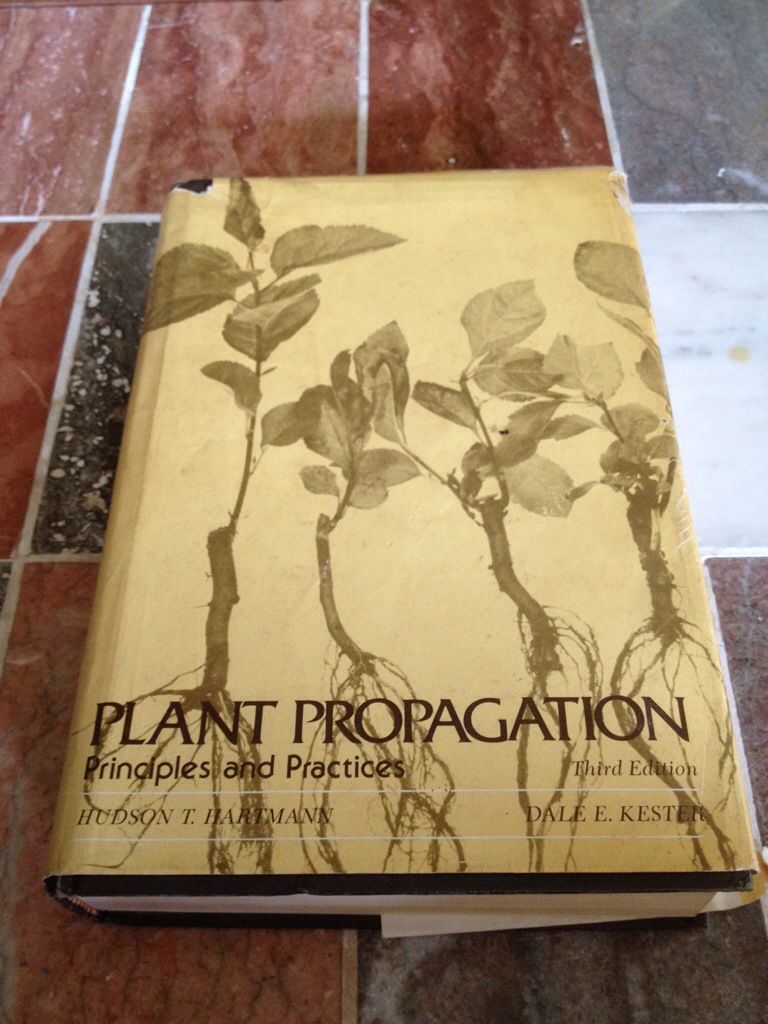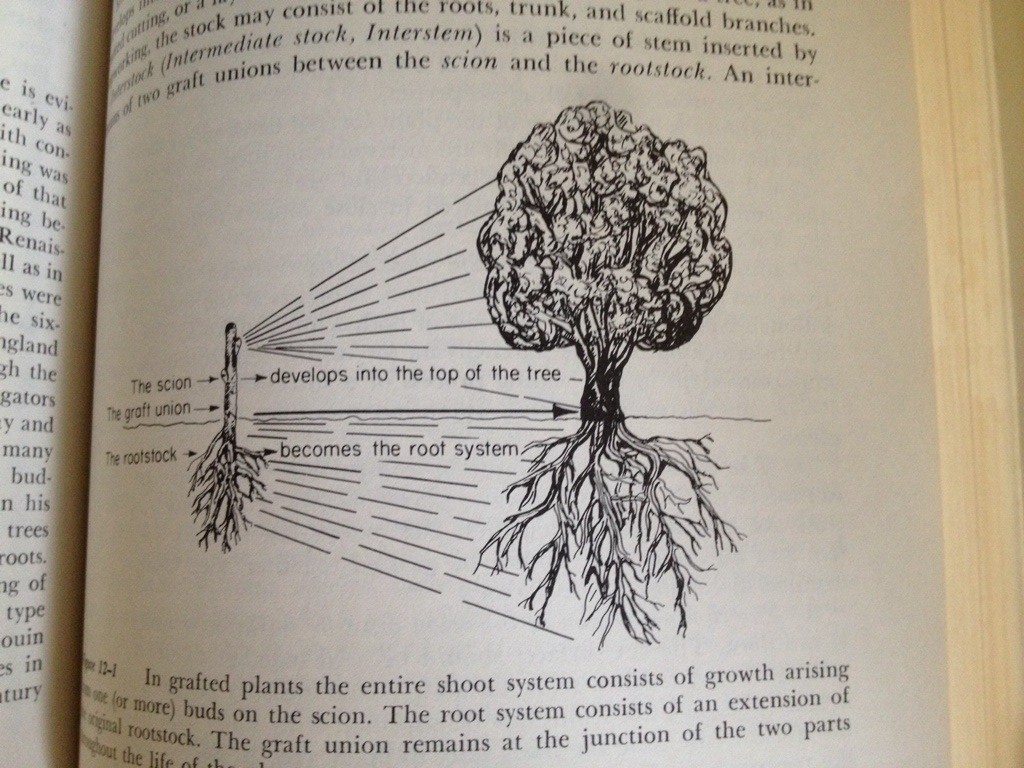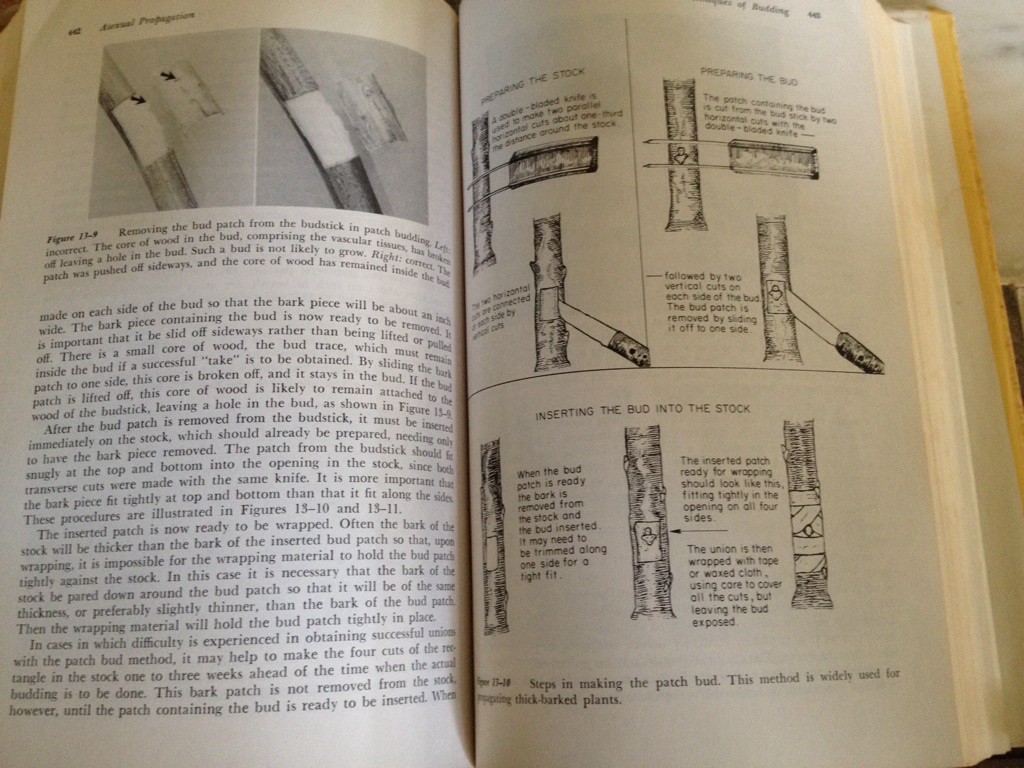As summer starts to think about turning to fall, the season for propagating woody perennials, trees, bushes, and shrubs gets closer. This spring we planted a bunch of fruit trees and berry bushes as part of our backyard food forest. Some of these plants, especially the ones we planted later in the year, did not appreciate the dry summer we had and will need to be replaced. This can add up when you are buying plants form a nursery, and while the value of a fruit tree investment is immense, it’s nice to be able to keep costs down by propagating new plants from trees and bushes you already own.
So, I pulled out an old book that we bought at an estate sale a while back called Plant Propagation: Principles and Practices. It’s a textbook for the nursery industry but also has many uses for the home orchard or permaculturalist. My copy is the 3rd edition from 1975 and I think it was 50 cents. Compared to the $132 for a new edition, I think we did pretty good, and if you are interested in this publication I would suggest buying a used copy of an older edition.
The book covers everything from building greenhouses and cold frames, to starting root-stocks for fruit trees from seed and grafting scion wood onto them to clone specific cultivars. It’s very easy to search the book for specific information on how best to propagate certain plants. I was able to quickly find out that layering is the best method for blackberries, softwood cuttings for blueberries, root cuttings for elderberries, and hard wood cuttings for currants. There are entire sections on how to each technique, with pictures, charts and more detail than you would ever really need to know. Each chapter has a list of less than useful scientific resources and references as well.
I definitely recommend Plant Propagation: Principles and Practices to anyone interested in propagating any sort of plant material, from fruit trees to house plants. I’d also suggest searching amazon for a used older edition to save some money on it. While it is written for a college level course, it reads easy, and is full of useful information for home gardeners and laymen. For anyone who finds themselves wanting to propagate multiple types of plants, having this book as a reference can save a lot of grief and effort.


